Innovation in COVID-19 vaccination Coverage: Motivating the people from remote areas to get vaccinated through effective communications
November 3, 2022
By Nazneen Ahmed, PhD, Country Economist & Head of Policy & Strategic Advisory Unit, UNDP Bangladesh
Ramiz Uddin, PhD, Head of Experimentation, UNDP Accelerator Lab, Bangladesh
M M Zimran Khan, Head of Exploration, UNDP Accelerator Lab, Bangladesh
Mayeda Tanha Bidushy, Communication & Reporting Officer, UNDP Accelerator Lab Bangladesh
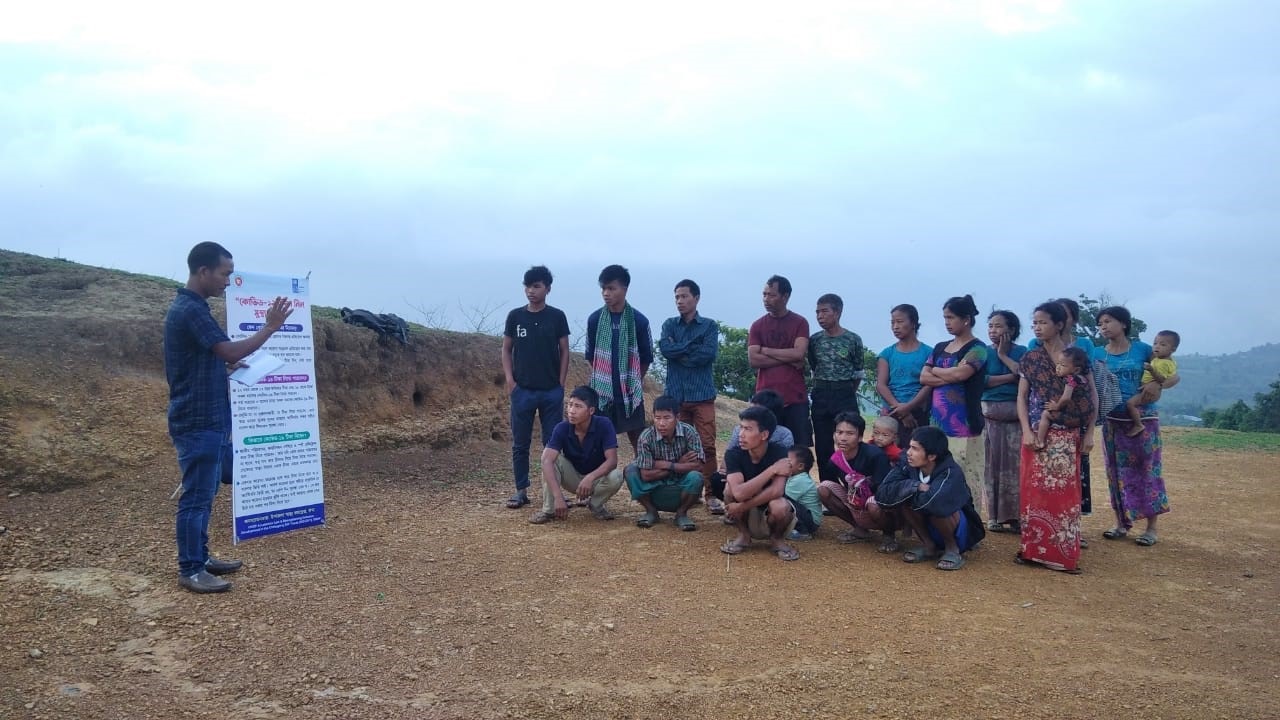
COVID-19 vaccination awareness raising session with Menpa para’s people in Bandarban District
Bangladesh has made significant progress in immunizing 80 percent of its people against COVID-19. However, the pace of vaccination was also not similar across every districts, as some hard-to-reach areas including hilly districts, especially Bandarban and Khagrachari, were far behind in COVID-19 vaccination in the beginning.To support the government’s mass vaccination program, UNDP Accelerator Lab has undertaken a number of activities bringing the locals of Bandarban and Khagrachari under the vaccination innovation administered by the Upazila (sub-district) Health Department. Based on the vaccine coverage mapping, the lab and locals marked the lowest vaccination /areas as the red zone, relatively lower vaccination areas as green, etc. Following by, UNDP Bangaldesh in coordination with the government explored ways to motivate the people and reach the areas of lowest vaccination coverage.
Motivational activities:
In the distant parts of the CHT areas, community workers went door to door to create awareness among the people. With the support of community workers, volunteers coming from nearby villages, and ethnic community leaders were involved in the promotional activities such as demonstrating the importance of COVID-19 vaccine, the health consequences of no vaccination by showcasing festoons, posters, and miking around the remote areas.
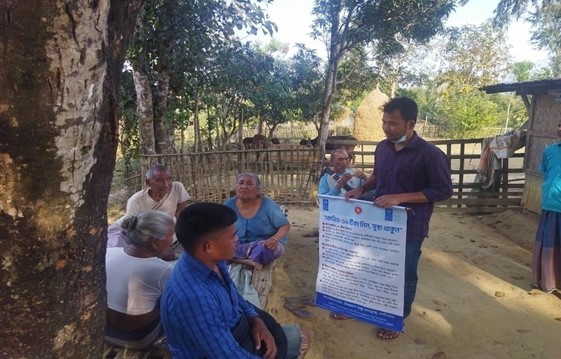
Volunteer demonstrates vaccination-related information among the community people
Following these promotional activities, a series of courtyard meetings with the local community leaders and religious leaders were arranged. These meetings advocated where the constraints of the government vaccination program, how people feel about the COVID-19 vaccine, and why individuals don't come to the centre for receiving the vaccines, and how the lab has come up with the solutions were discussed thoroughly.
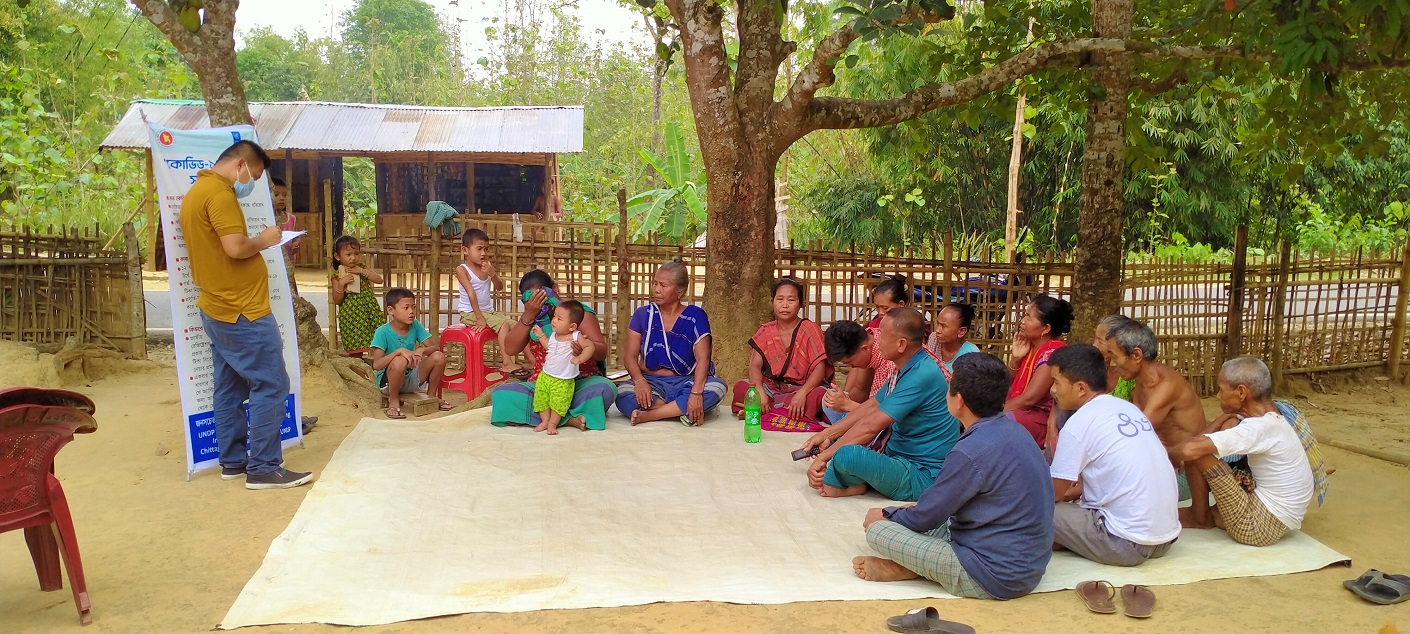
Community mobilization by volunteers in Khagrachari District
As a part of the innovation process, volunteers arranged miking, and announcements through religious places, and distributed banners, posters, and leaflets among the local community. Also organized courtyard meetings to change their (local community) outlook and misconceptions regarding vaccination. Reaching out to the community leaders (Karbari, headmen) made the whole process more effective. Recruited from nearby villages, the volunteers were handpicked from the local community to convince the local community as well as the leaders (religious, and political).
Active Involvement of Volunteers to increase awareness:
To increase awareness of the COVID-19 vaccine, the lab appointed a group of local volunteers who visited each village before the vaccination campaign to motivate the unvaccinated people to receive vaccine shots and report back to the supervisor. A total of 17 volunteers are stationed in two regions to carry out motivational activities to encourage people to receive the vaccine. Moreover, for building awareness among the people, accurate information about the COVID-19 vaccine was also provided through leaflets, banners, and festoons. They were facilitated with financial assistance (minimal incentive for designated officials to carry out vaccination campaigns) as well as an incentive for volunteers to work in the hard-to-reach and inaccessible pocket areas.
Engagement of Para Karmi:
The lab initiated the engagement of Para karmi (Para Worker) in building awareness of COVID-19 during their regular home visits. They also assisted the health staff as a volunteer during the vaccination campaign in their areas. Their awareness-raising message regarding COVID-19 during home visits contributed to the increased vaccination coverage. The participants of the focused group discussions reported that reaching out to the people at the household level, was an innovative way to engage the Para karmi.
One of the focused group discussion participants at the Matiranga Upazila of Khagrachari district reported that “Many unvaccinated people got interested to receive vaccines due to the intention of receiving a COVID-19 vaccination certificate. The government announcement such as no mask no service, having a COVID-19 certificate for the job or getting admission in the school and hospital, etc. encouraged eligible people to receive vaccines”.
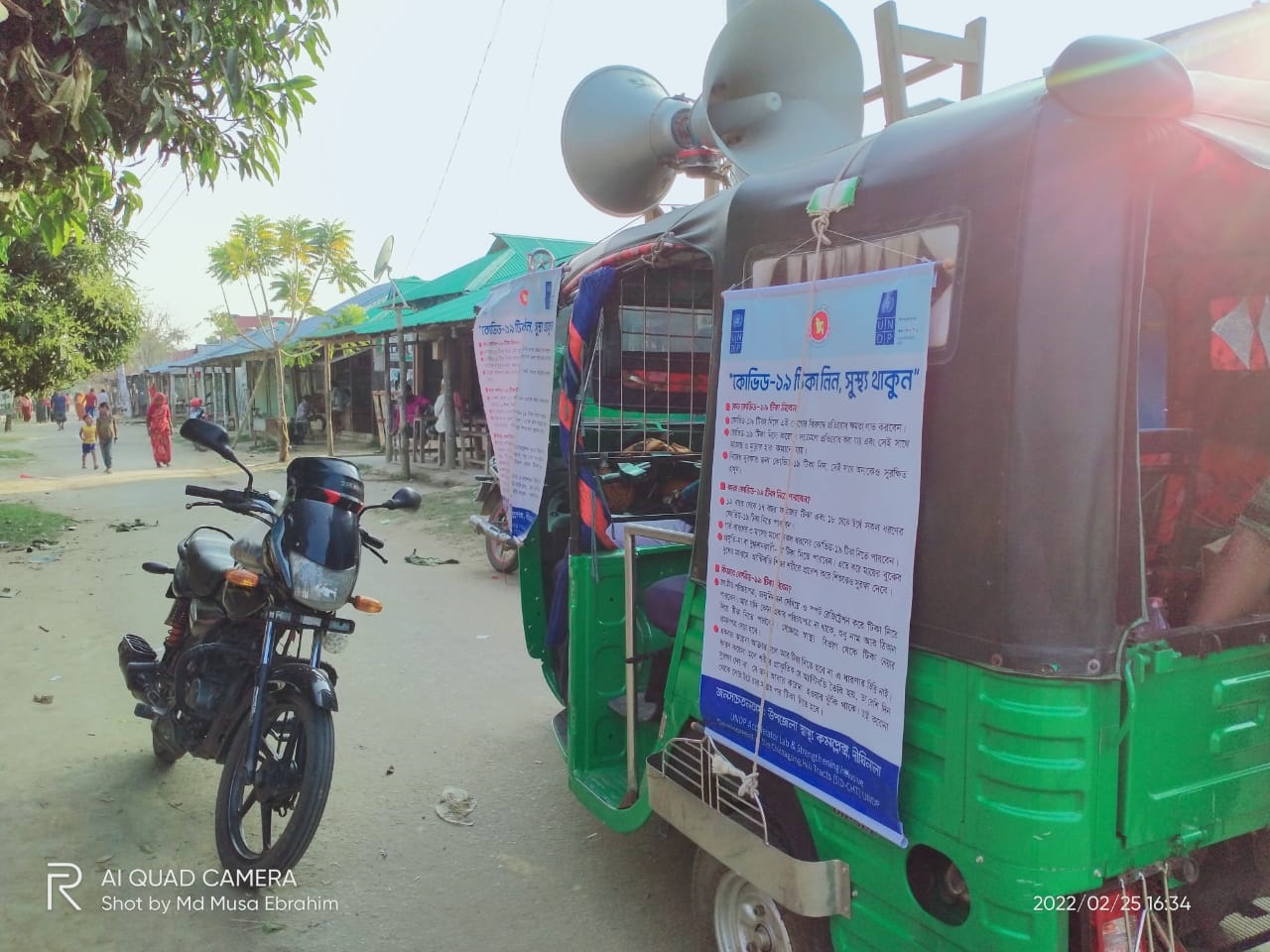
Miking on the streets as a part of Promotional activities for awareness-raising
Miking: In some remote areas, the lab took the initiative to rent a CNG and made the announcement using a mike to encourage the local people to receive the COVID-19 vaccine. The IDI (In-depth Interview) participants such as community leaders (Karbari/Headman), local government representatives (UP Chairman/Member), high school teachers, and religious leaders reported that miking was very effective to inform and encourage people to come to the vaccination center to receive the vaccine.
Usage of the religious platform: Another initiative of the lab was to use religious platforms such as mosques, temples, churches, etc. to increase vaccination coverage. People usually have trust in religious leaders. This initiative helped encourage those who were reluctant to receive vaccines due to religious beliefs.
Courtyard meeting: A total of 98-yard meetings took place in Bandarban and khagrachari of Chittagong Hill Tracts (CHT). In these meetings, they discussed information related to COVID-19, its impact on health, and the urgency of receiving the COVID-19 vaccine so that the unvaccinated people got interested in receiving the vaccines. Moreover, the health volunteer of UNDP provided COVID-19-related information during the regular yard meeting conducted by the government and NGOs with the mothers. The health volunteers of the lab reported that this effort impacted positively on encouraging pregnant women and lactating mothers to receive vaccines
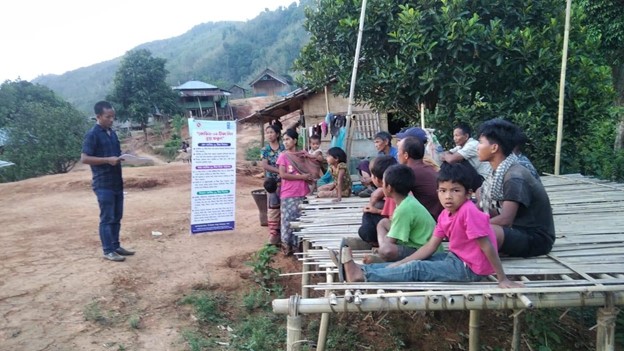
Yard meeting for motivating people at Bandarban.
Tea-Stall Discussion: Volunteers went to different tea stalls where generally the community people gather and discuss many things about society and life. They make people aware of the importance of receiving vaccines and motivated them. Tea stall discussions were an effective way to communicate the elderly people who were generally not interested to take vaccines previously.
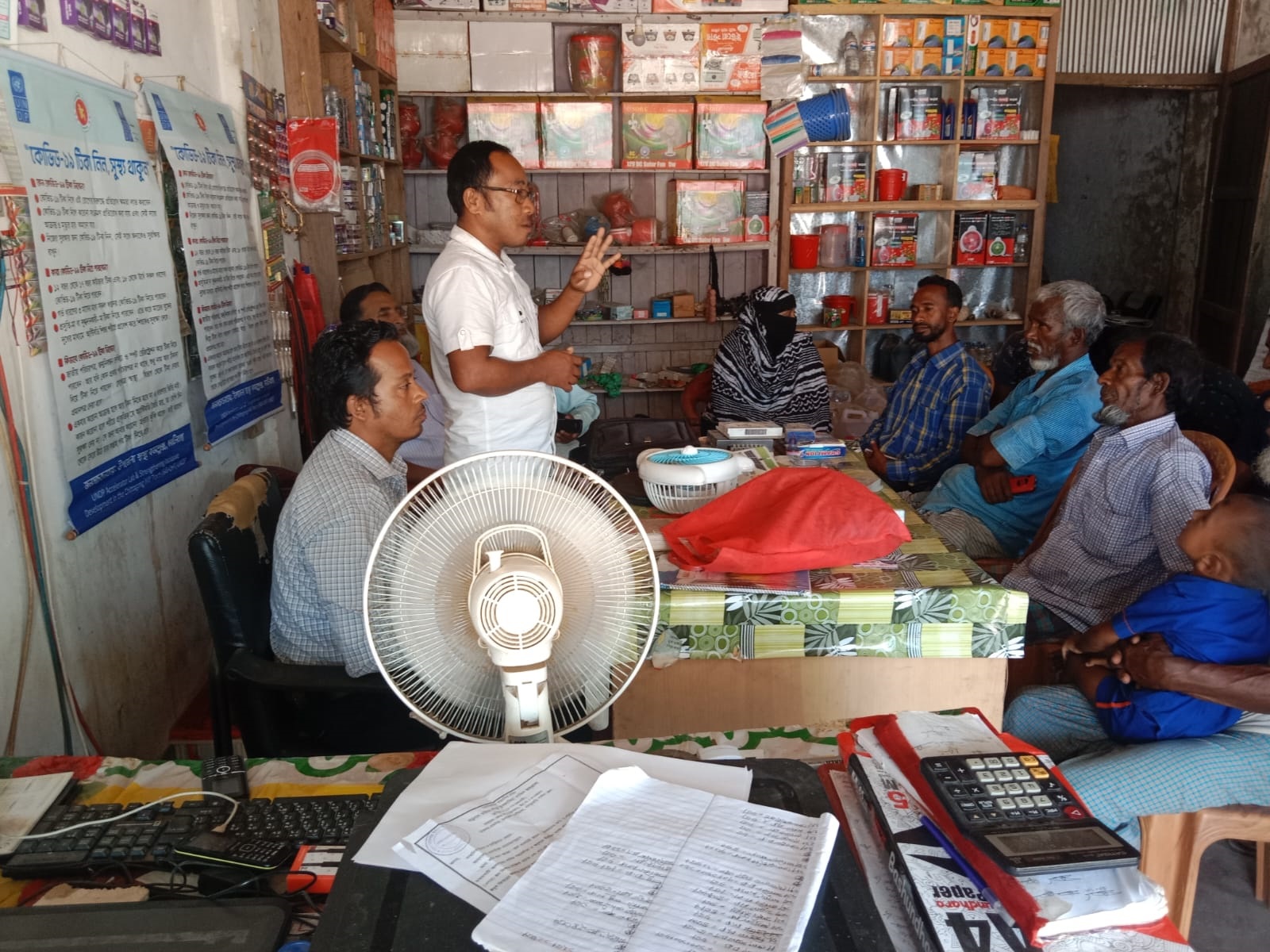
Tea stall discussion about COVID-19 vaccination at Khagrachari
From convincing the community leaders and ethnic minorities having no information to delivering the vaccines to the remote hilly areas and encouraging the community to get vaccinated, the community volunteers involved in the process made this innovation happen, thanks to their participation in motivational activities supported by the lab.

 Locations
Locations



